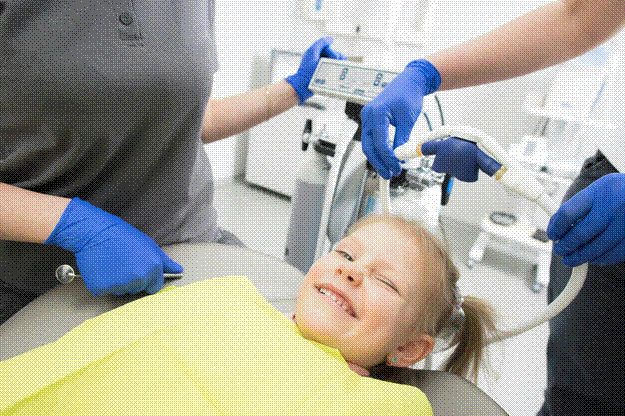Dental innovation doesn’t stop at the chair—it starts the moment a patient reaches out to schedule their visit. Whether it’s a routine cleaning or a consult for veneers, the front desk is often the first real interaction a person has with a clinic. That first contact can either reassure a nervous patient or send them looking elsewhere. In today’s fast-moving digital world, reception can no longer be just a smiling face at the front. It has to be smart, responsive, and consistent—day or night.
That’s where tools like an AI receptionist for dentists come into play. This isn’t just about answering phones faster. It’s about creating a seamless, professional, and reliable patient experience without overburdening human staff. From appointment reminders to call routing and after-hours support, smart receptionist platforms are doing much more than people realize—and clinics that adopt them are seeing the benefits stack up.

Rethinking the Front Desk: More Than a Nice Smile
Reception in a dental practice has always been high-stakes. Every miscommunication, delay, or dropped call can mean a lost patient or a dent in your reputation. At the same time, front-desk staff are juggling a lot—insurance questions, walk-ins, reschedules, emergencies. It’s not just about multitasking; it’s about being on all the time.
But even the best-trained human team can’t respond to every inquiry at 7 p.m. on a Saturday or remember to follow up with 100 patients individually each week. That’s not a knock on staff—it’s a gap in the system. And it’s exactly the kind of gap AI can fill with precision and speed.
What Does an AI Receptionist Actually Do?
Let’s keep it simple. A dental AI receptionist handles the repetitive, admin-heavy parts of front-desk work—without replacing the human touch entirely.
Here’s a breakdown of typical tasks:
- Answers incoming calls and messages 24/7
- Books, confirms, or reschedules appointments
- Sends reminders and follow-ups
- Responds to FAQs (hours, insurance, services offered)
- Flags urgent concerns for human follow-up
- Collects patient intake info automatically
Think of it like the ultimate front-desk assistant—one that never calls in sick, never gets overwhelmed, and never drops the ball on a follow-up.
The Real Benefits for Clinics
Dental professionals are busy. Between managing treatment plans and staying current with clinical standards, the last thing most dentists want to deal with is operational headaches. But here’s where investing in front-desk automation pays off.
1. Fewer Missed Appointments
One of the most consistent challenges in dentistry is patient no-shows. Manual reminder systems can help, but they’re far from foolproof. AI receptionist platforms send automated texts, emails, and voice reminders—and they can even offer rescheduling links in real-time if someone replies that they can’t make it. That reduces gaps in your schedule and helps keep your revenue predictable.
2. Faster Patient Intake
Instead of handing out paper forms or chasing down emails, smart receptionist systems can automatically send digital intake forms after a patient books. That means patients arrive more prepared, and your front desk isn’t stuck keying in data while the waiting room piles up.
3. Better Call Handling
Not every clinic can afford to staff the phones all day—and certainly not at night. AI receptionists don’t just answer after-hours calls; they can help patients take action. Whether it’s scheduling a next-day appointment or directing a dental emergency to the right contact, they reduce voicemail black holes and missed opportunities.
4. Consistent Service, Every Time
People are human—which means even great staff can have off days. AI doesn’t. Whether it’s Monday morning or Friday afternoon, the system delivers the same clear, helpful information to every patient. That kind of consistency builds trust over time.
5. Staff Relief and Retention
Burnout in dental admin roles is real. Repetition, stress, and constant phone interruptions make these jobs tough. With AI handling repetitive tasks, human staff can focus on more meaningful work—like helping nervous patients or handling complex insurance issues. It’s a more sustainable, enjoyable workplace.
“But My Patients Want to Talk to a Real Person…”
And they still can. AI doesn’t mean removing all human contact—it means enhancing the experience. A good AI receptionist knows when to hand off a call to a human. It isn’t there to replace your team; it’s there to support them.
In fact, many patients prefer getting quick, accurate answers without waiting on hold. Especially younger patients, who grew up texting and booking everything online, value convenience over chit-chat.
The key is blending automation with personalization. AI handles the standard questions and bookings, while your human staff focuses on cases where empathy and judgment are truly needed.
Saving Money While Making Money
Let’s talk numbers. While upfront investment in a smart receptionist platform may give some clinics pause, the ROI is clear. Consider:
- Each missed appointment costs hundreds in lost revenue
- Receptionist turnover requires costly recruitment and retraining
- Manual errors in scheduling lead to double-booking or underutilization
Now flip that:
- A 24/7 system captures bookings at all hours
- Automated reminders reduce no-shows
- Streamlined intake saves admin time
- Improved service boosts patient satisfaction and referrals
It’s not just about doing things cheaper. It’s about doing them better—and making more in the long run.
What to Look for in a Dental AI Receptionist
Not all platforms are built the same. If you’re considering a system like Viva AI, here are a few features worth prioritizing:
- Dental-specific functionality: Look for tools built for dentistry, not general office use. They’ll understand terminology, workflows, and typical patient questions.
- HIPAA compliance: Patient privacy is non-negotiable. Make sure the platform has strong data protections.
- Omnichannel support: Can it handle voice, text, and web chat seamlessly?
- Easy integration: It should work with your existing booking or EHR software.
- Smart escalation: The system should know when a message needs human attention.
Bonus points if the interface is intuitive—your staff will thank you.
The Human + Machine Formula
The smartest clinics aren’t going fully robotic—they’re combining the best of both worlds. By letting tech handle the repetitive, scalable tasks, humans can do what they do best: connect, reassure, and care.
For example, a patient may use the automated system to schedule a visit and fill out forms. But once they arrive, your human receptionist greets them, answers nuanced questions, and makes sure they feel welcome. It’s a streamlined experience that still feels personal.
This hybrid model doesn’t just improve efficiency. It elevates the patient journey.
Why It Matters Now More Than Ever
Post-pandemic, patients are more tech-savvy—and more impatient. They expect smooth digital interactions, even from smaller clinics. Meanwhile, staffing shortages and rising costs are making it harder to meet those expectations the old-fashioned way.
That makes now the perfect time to rethink how the front desk works. AI isn’t just a convenience—it’s quickly becoming the new standard for practices that want to thrive in the next five years, not just survive.

Final Thoughts: The First Impression Is No Longer a Person—It’s a System
In a dental clinic, the first few minutes of a patient’s experience matter just as much as the quality of the procedure. A long wait on hold, a missed email, or a confusing intake form can sour someone before they even sit in the chair.
With tools like Viva AI stepping in to modernize the front desk, clinics have a chance to make those first moments smoother, faster, and more professional.
And when reception gets smarter, the whole clinic benefits—staff, patients, and providers alike.





